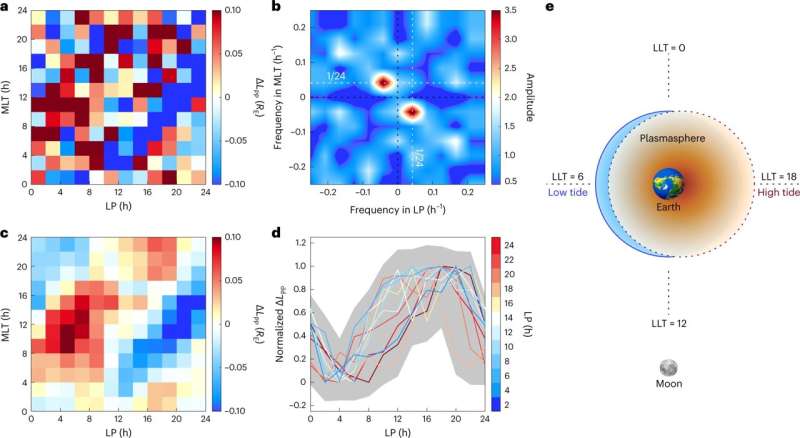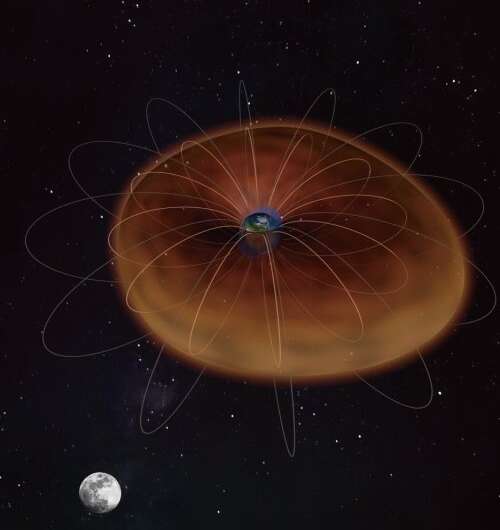February 1, 2023 report
This article has been reviewed according to Science X's editorial process and policies. Editors have highlighted the following attributes while ensuring the content's credibility:
fact-checked
peer-reviewed publication
trusted source
proofread
Evidence found of tidal impact on the plasmasphere

An international team of space scientists reports that the moon exerts a tidal impact on the plasmasphere. For their paper published in the journal Nature Physics, the group used data from multiple spacecraft over a nearly 40-year period to measure tidal perturbations in the plasmapause. Balázs Heilig, with the Institute of Earth Physics and Space Science, in Hungary, has published a News & Views piece in the same journal issue, explaining the nature of the plasmasphere and outlining the work in this new effort.
Early scientists found a connection between the tides and the movement of the moon thousands of years ago. More recent evidence suggests the moon's pull acts on the ionosphere as well. In this new study, the researchers wondered if the moon might also have an impact on the plasmasphere.
The plasmasphere is a toroidal mass of plasma that surrounds the Earth. It lies beyond the ionosphere and is made up mostly of electrons and protons. Its particles are charged by the ionosphere, and its outer boundary is known as the plasmapause.
To find out if it is impacted by the moon's gravity, the researchers obtained data from approximately 36,000 crossings of the plasmasphere by spacecraft over the years 1977 to 2015. They also used data from the Van Allen Probes from the years 2012 to 2019 to gain a better perspective on possible plasmasphere modulations.

The group found that they were able to isolate tidal variations in the shape of the plasmapause that could be associated with the position of the moon, clear evidence that the moon does exert an influence on the plasmasphere. They also found that they were able to see monthly periodicities in the changes in plasmapause.
The researchers propose that three basic elements are responsible for the tidal variations: the existence of a two-body system—namely the Earth and moon—along with the existence of the plasma field and the existence of the magnetic field. They further suggest that similar tidal variations likely occur in other two-body systems throughout the universe.
More information: Chao Xiao et al, Evidence for lunar tide effects in Earth's plasmasphere, Nature Physics (2023). DOI: 10.1038/s41567-022-01882-8
Balázs Heilig, Lunar modulations, Nature Physics (2023). DOI: 10.1038/s41567-022-01913-4
Journal information: Nature Physics
© 2023 Science X Network





















